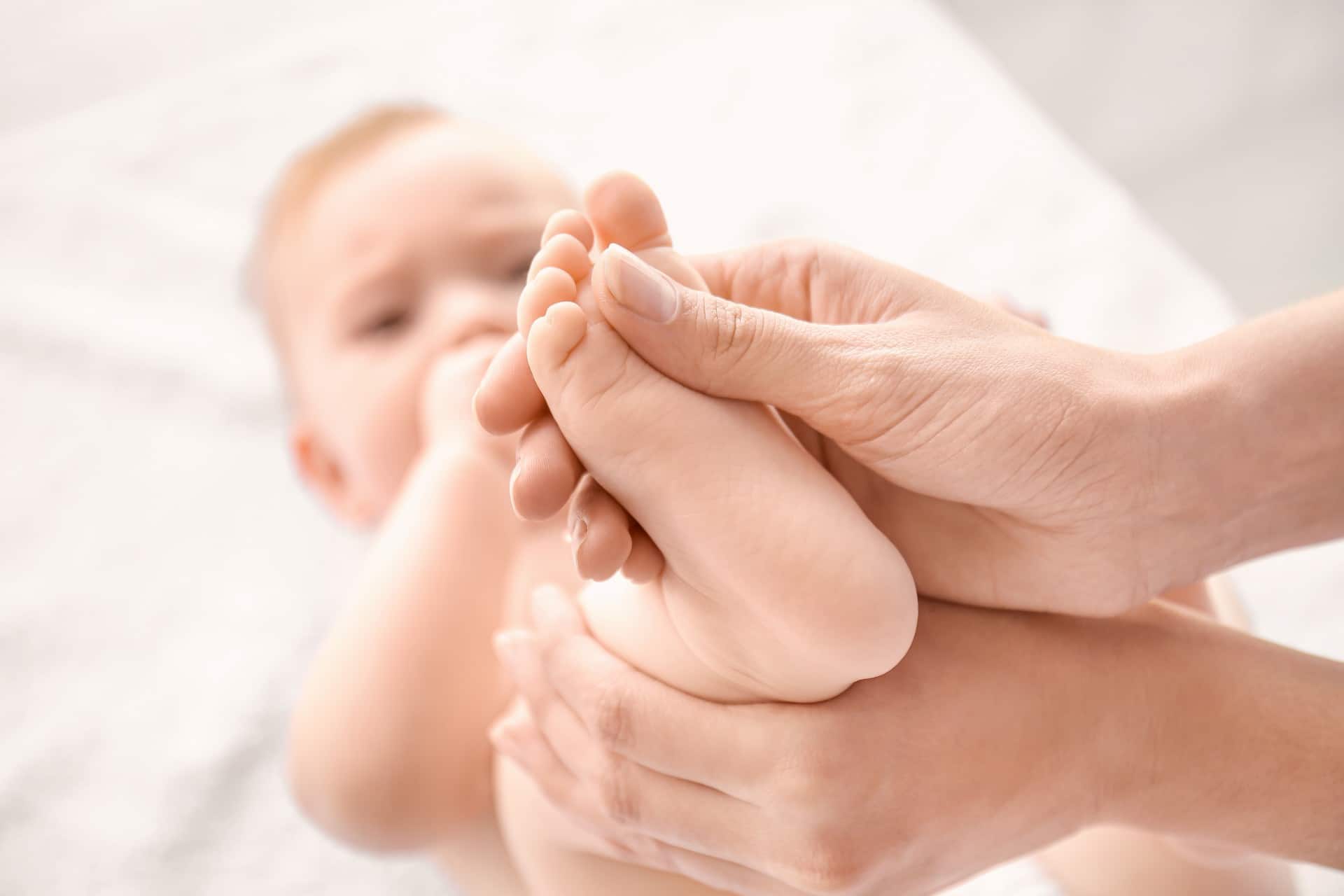Answers to Questions on Skewfoot
At Southern California Foot & Ankle Specialists, we are highly committed to helping children and their families through the journey of managing and correcting congenital birth defects and deformities. While clubfoot receives particular focus, there are many other conditions we provide treatment and support for, including skewfoot.
We will provide answers to commonly asked questions about skewfoot here. This can serve as a good starting point, but any families who have a child with this condition will naturally require more information and consultation. Please do not hesitate to reach out to us and schedule an appointment. We will always be happy to talk with you.
What is Skewfoot?
Skewfoot is a congenital birth defect, meaning that it is present at birth.
It is very similar to metatarsus adductus, in which there is a “bend” in the middle of the foot and the foot curves inward.
The difference with skewfoot is that the hindfoot is also misaligned. This can lead to a “C” or “Z” shape in the foot. As such, the condition may sometimes be referred to as “Z-foot” or “serpentine foot,” while some physicians may choose instead to call it a severe case of metatarsus adductus.
In addition to the general shape of the foot, more specific symptoms of skewfoot can include:
- Abnormality in a child’s gait.
- The cuneiform bone in the arch of a child’s foot has a triangular shape instead of the standard square.
- The ankle bone, heel bone, and/or navicular bones are out of alignment in relation to each other.
- The five metatarsal bones (at the base of the toes) are shifted inward.
- There is a greater likelihood of heel pain, knee pain, hammertoes, and other conditions with age, as the body is forced to endure abnormal gait and strain with time.
What Causes Skewfoot?
As with all congenital birth defects, a skewfoot deformity can arise through inherited traits that cause instability or misalignment in the foot. There is nothing parents could have done to prevent the condition, and are absolutely not to blame.
In some cases, a child might be born with only part of the full misalignment of this condition, with the rest developing as a secondary effect due to the way the body shifts itself and its weight to compensate. Again, this is not the fault of the child or parents.
How Can Skewfoot be Treated?
The good news is that many cases of skewfoot will resolve on their own, much like pediatric flatfoot, in-toeing, or out-toeing. The condition remains rather flexible through a child’s development, until typically around the age of six when it can become more rigid. This is when further troubles can begin to develop.
An early diagnosis of skewfoot can be difficult to make for children younger than the age of six due to that flexibility. Ideally, the feet can be monitored throughout development to determine whether the skewfoot deformity is resolving on its own, or if action needs to be taken.
That said, since skewfoot does remain rather flexible at younger ages, that means non-surgical means can be used in attempts to address it. Since these forms of treatment are not harmful or particularly bothersome for most children, they might be recommended even if there is some uncertainty that the condition will become rigid. In other words: better safe than sorry.
Common non-surgical treatments for skewfoot include:
- Serial casting treatments to help guide the foot back into realignment (similar in certain ways to the Ponseti method of clubfoot casting).
- Wearing wide or specially designed shoes to reduce detrimental stresses against the foot.
- A strict regimen of stretching exercises performed with the help of a parent or guardian.
If skewfoot is severe, has gone rigid, or is otherwise causing a child pain or trouble walking, surgery might be considered instead.
Surgical correction for skewfoot typically involves cutting the bones in the foot to realign them and tightening ligaments to address instabilities. Pins are then inserted into the foot to affix the alignment.
A surgically treated foot will be placed in a cast to further secure and protect the structure of the foot as it recovers. Typical post-operative instructions are for a child to not walk or stand on their treated foot or feet for 6 weeks. After that period, the initial cast will be replaced with a walking cast or boot.
Ultimately, our recommendations for treatment will greatly depend on the age of your child and the severity of the condition and its symptoms. We will freely discuss with you the reasoning behind all of our suggestions, as well as why other options might not be recommended at a given time.
Your Family’s Source for Help and Support
Whether your little one is facing skewfoot, clubfoot, metatarsus adductus or other congenital challenges, our doctors have many years of experience not only in diagnosing and treating such issues, but helping families just like yours receive the compassionate support they need.
If you have any concerns about your child – even if you aren’t sure that anything is truly out of the ordinary – please never hesitate to contact us sooner rather than later. We will always listen and provide our expert advice and guidance.
Call our Ladera Ranch office at (949) 364-9255 (WALK) to schedule an appointment. We also have telemedicine appointments available if you prefer them.

